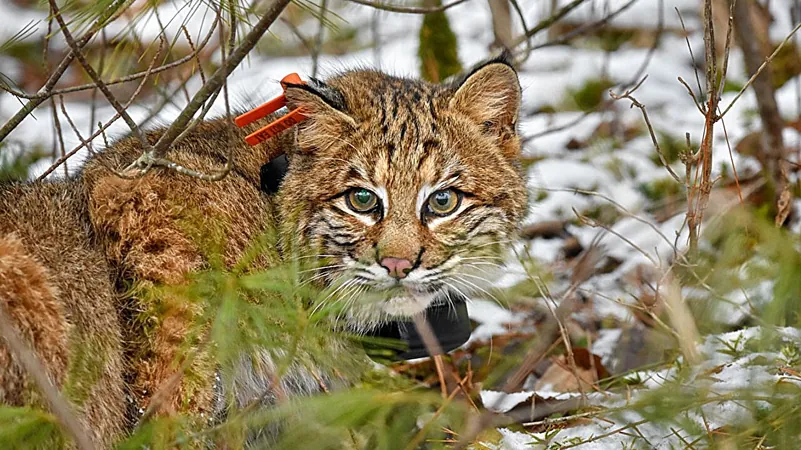
Avian Influenza Outbreak Hits Bobcats in New York: A Growing Concern for Wildlife
2025-03-26
Author: Sarah
In a startling revelation, avian influenza, known for wreaking havoc on poultry and wildlife, has officially been detected in wild bobcats in New York State. The highly pathogenic H5N1 strain has not only led to deaths among these elusive felines but has also raised alarm bells regarding public health and wildlife management.
A recent study published in the Journal of Wildlife Diseases sheds light on how researchers tracked live bobcats throughout New York. The findings reveal that more than half of the 16 captured bobcats showed antibodies indicative of exposure to avian influenza, with four confirmed cases linked to the perilous H5N1 strain. While some bobcats have survived the virus, the death of one individual post-capture serves as a stark reminder of the potential dangers.
Jennifer Bloodgood, a senior author and wildlife veterinarian at the Cornell Wildlife Health Lab, emphasized the importance of this research. “While it's encouraging that some bobcats have managed to survive the virus, we must recognize that infection can lead to death. This underscores the urgent need for proactive monitoring of wildlife diseases,” she stated. The study has drawn attention to the worrying trend of increasing avian influenza cases in mammals, suggesting a broader ecological impact.
Between January and March 2024, researchers equipped bobcats with GPS collars for a comprehensive study aimed at estimating their populations. They reported that of the bobcats exposed to H5N1, two remain alive, while the status of the other two is under investigation after losing GPS contact. Notably, one bobcat that initially tested negative tragically succumbed to the virus just weeks after capture, raising questions about the variability in susceptibility among individuals.
The ongoing threat of avian influenza is not confined to wild bobcats. The virus has drastically affected poultry populations globally and is now documented in over a dozen mammalian species, even posing risks to humans—a fact illustrated by a fatality reported in the U.S. This occurrence marks a significant milestone, as it is the first recorded flu-related bobcat death in New York.
The implications of these findings are profound. "Carnivores are one of the most affected groups, but they are understudied,” remarked Haley Turner, the study’s first author and a master's student involved in the research. “Our detection of antibodies speaks to those who survived long enough to be sampled, but it does not account for the unseen numbers that may have died quickly or evaded capture due to illness."
The research team collaborated with licensed trappers for the study, who assisted in the capture and monitoring of these elusive animals. After being sedated for sampling, bobcats were released back into their habitats—a process that highlights the balance between wildlife management and conservation efforts.
As researchers continue to monitor these populations, they underscore the necessity of early detection and proactive measures to avert the potential decline of wildlife due to disease. This pioneering study is a crucial step toward comprehensively understanding the impact of avian influenza on wildlife and emphasizes the interconnectedness of wildlife health and human safety.
Stay tuned for updates as this story develops. The implications could spell significant changes for wildlife management strategies and public health protocols in the face of emerging zoonotic diseases!

 Brasil (PT)
Brasil (PT)
 Canada (EN)
Canada (EN)
 Chile (ES)
Chile (ES)
 Česko (CS)
Česko (CS)
 대한민국 (KO)
대한민국 (KO)
 España (ES)
España (ES)
 France (FR)
France (FR)
 Hong Kong (EN)
Hong Kong (EN)
 Italia (IT)
Italia (IT)
 日本 (JA)
日本 (JA)
 Magyarország (HU)
Magyarország (HU)
 Norge (NO)
Norge (NO)
 Polska (PL)
Polska (PL)
 Schweiz (DE)
Schweiz (DE)
 Singapore (EN)
Singapore (EN)
 Sverige (SV)
Sverige (SV)
 Suomi (FI)
Suomi (FI)
 Türkiye (TR)
Türkiye (TR)
 الإمارات العربية المتحدة (AR)
الإمارات العربية المتحدة (AR)